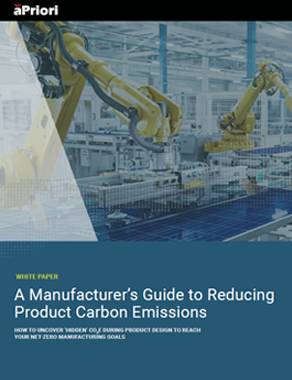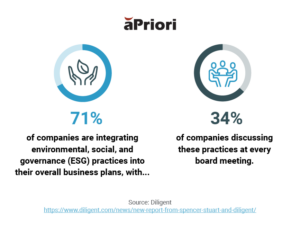Debunking Sustainability Practice Myths
“Sustainable initiatives are too much work.”
“All plastic is recyclable and recycled”
“I don’t really think our sustainability efforts will make a difference anyway.”
“All plastic should be avoided.”
“It will cost too much, and I don’t think we will actually save in the long run.”
Statements like those above have been heard throughout many industries including manufacturing. Like anything new and somewhat ambiguous, there will always be resistance.
However, consumers are demanding sustainable products and expect businesses to adopt practices that reduce their carbon footprint. In fact, a Forbes piece noted that Gen X consumers increased their sustainable brand preferences by nearly 25% in the last two years. In the same period, this same group increased their willingness to pay more for sustainable products by 42%. It is a telling statistic, given that just 58% of all consumer generations were willing to spend more for sustainable items two years ago.
In this article, we will discuss and debunk several sustainability misconceptions. Additionally, we will underscore why sustainable practices are not only good for the environment but for manufacturers. Finally, we will illustrate how aPriori’s manufacturing insights platform supports these efforts.
A Sustainable Practices Disconnect
Manufacturers must get on board with sustainability practices. Consumers demand them and governments are mandating sustainability legislation and incentives. The first step for manufacturers is to understand exactly what sustainability practices entail.
Consumer demand, internal policy/culture, regulatory initiatives/sustainability transparency, and financial investments are all equally important. However, sustainability practices cannot be an either/or proposition. They need to encompass each of these areas. Once manufacturers make that connection, they can build an effective sustainable practices strategy that meets consumer demand, regulatory requirements, financial goals, and internal policies and culture.
The Push Towards a Sustainable Practice
The good news is that businesses are connecting the dots and moving in the right direction, recognizing the importance of implementing sustainability practices. According to the Diligent Institute, 71% of companies are integrating environmental, social, and governance (ESG) practices into their overall business plans, with 34% discussing these practices at every board meeting.
Government regulations such as the EU taxonomy also are nudging businesses toward sustainable practices. Incentivizing businesses to implement ESG practices is helping up the ante. For instance, the U.S. Federal Government recognizes the importance of instituting financial incentives for manufacturers to implement sustainability initiatives including The Inflation Reduction Act and Section 48C Manufacturers’ Tax Credit.
The SEC recently proposed new sustainability regulations for registrants to include certain climate-related disclosures in their registration statements and periodic reports, including information about climate-related risks that are reasonably likely to have a material impact on their business, results of operations, or financial condition, and certain climate-related financial statement metrics in a note to their audited financial statements. The required information about climate-related risks also would include disclosure of a registrant’s greenhouse gas emissions, which have become a commonly used metric to assess a registrant’s exposure to such risks. Learn more about the SEC’s proposed climate disclosure reporting mandates.
Sustainable Practice Misconceptions and Truths
Sustainability can be problematic for some businesses. In order to work around true sustainability initiatives, some organizations opt for greenwashing. An organization will market itself as a sustainable or environmentally friendly company without actually working to reduce its carbon footprint. However, as more consumers demand more sustainable products and practices, businesses are getting on board. Moreover, they are recognizing the value of adopting more sustainable practices. But there is much work still left to move the needle. Let’s debunk some common sustainable practice misconceptions.
Plastic misconceptions: Many believe that all plastics are recyclable and that all of them are actually being recycled. Not so. Just 9% of plastics worldwide are recycled. The rest is incinerated, dispersed throughout the environment, or ends up in landfills. Another misconception is that all plastics should be avoided.
Truth: While single-use plastic such as water bottles present environmental issues and are not practical, plastics are strong, lightweight (requiring less motion energy), impact-resistant, and require little to no maintenance. It makes them a strong material contender for more sustainable manufactured parts, vehicles, and more. There are plant-based and biodegradable plastics that further reduce the carbon footprint. Countries are working on legislation to restrict single-use plastics. The United Kingdom implemented a new tax in April 2022 on plastic packaging that recycles less than 30% of its content.
Cost and ROI misconceptions: It is an age-old dilemma. It is time to make a change or upgrade. The first question often asked is, “How much is it going to cost us?” The next question typically is, “What will be our return on investment?” Though money is a considerable factor, it shouldn’t be the main driver. In this instance, it may be better to be counterintuitive. Work backward from what you will gain to what it will cost.
Truth: While it is true that the initial sustainable practice investment could be expensive, it will be offset in the long run by a lower carbon footprint. As mentioned above, many governments are providing incentives to implement sustainable practices. Conversely, they also are imposing fines for those who do not meet sustainability legislation. It could prove very costly to those businesses that resist the movement.
Manufacturers are seeing the positive impacts of becoming a sustainable practice. For instance, aPriori has proven to save clients 3-5 times more projected CO2 savings alternatives. A Raconteur article noted a British construction company reduced construction waste by 25 percent, and carbon and water intensity by 18 percent and 14 percent, respectively, due to their sustainable practice efforts. They also outperformed (and outbid) competitors lacking environmental sustainability advantages.
Impact misconceptions: “It won’t make a difference.” It seems every generation voices a similar sentiment. But “little drops of water make a mighty ocean.”
Truth: Together, we can have a huge impact on the environment. Think about it. During the Covid-19 shutdown, air and water quality improved. Noise and light pollution decreased. The quality of life for nature and animals improved. If you take our client CO2 savings alternatives statistic above and multiply it by 100 other manufacturers, it has a tremendous environmental impact.
Time and implementation misconceptions: “Sustainable initiatives are too much work.” Possible without the right approach. Companies like aPriori enable an efficient, seamless approach to implementation.
How aPriori Supports a Sustainable Practice
aPriori’s platform lends itself to sustainable business practices. It also debunks the idea that sustainable practices are too much work. aPriori does the heavy lifting. Here are a few of the benefits:
Design: 80% of a product’s early design determines its environmental impact. Design for sustainability insights help reduce product lifespan and end-of-life use impacts. Measure, reduce, and analyze a product’s manufacturing CO₂ footprint faster and accurately. 3D CAD data is quickly evaluated through a geometry-driven analysis to assess the CO₂ footprint. Environmental and cost data drills down to granular, traceable, and transparent calculations.
Lightweighting is a good example of less material use with one caveat. It needs to be coupled with a low-waste manufacturing process. Otherwise, the CO₂ savings are reduced. Design engineers can baseline a product’s environmental footprint for reporting and optimize components for CO₂ equivalents while ensuring manufacturability. The “avoid plastic” myth is debunked, since fiber-reinforced plastic polymers can be used as structural components in and around an electric vehicle’s high-heat areas (like battery packs and motors). It results in a lighter, more energy-efficient electric vehicle.
Cost: aPriori allows you to see your CO₂ reduction potential along with full visibility into the cost. Manufacturers can get actionable insights into their largest cost and CO₂ contributors. Our should cost functionality helps manufacturers keep sustainable practice expenses in line. Make vs. buy comparisons also can be made at this stage. Additionally, cost outliers can be identified and remediated quickly, balancing costs and offsetting the manufacturer’s carbon footprint.
Supply chain: Supply chains typically are responsible for 90% of a company’s overall environmental impact. By utilizing more local supply chains and moving some processes closer to home, a manufacturer’s carbon footprint can be greatly reduced. aPriori provides material cost tools and a Regional Data Library covering 87 regions to support manufacturers’ supply chain resiliency and associated costs. You also can quickly and accurately quote supplier prices.
Good for the Environment…and the Bottom Line
Sustainability is good business. It does contribute to customer retention, and ultimately, the bottom line.
Executives must get on board, champion sustainable practice across the organization including stakeholders, and ensure that it is implemented so it not only has a profound impact for the environment but the organization as well. And if you think businesses aren’t serious about this initiative, think again. Many companies are now tying executive compensation to their ESG goals.
The caveat is that these sustainable practices cannot be siloed. They must extend across the entire value chain. It’s why cross-organizational collaboration and stewardship are critical to sustainable practice success.
Get aPriori's Exclusive Guide to Reducing Product Emissions
Sustainability doesn’t have to come at the expense of profitability.









